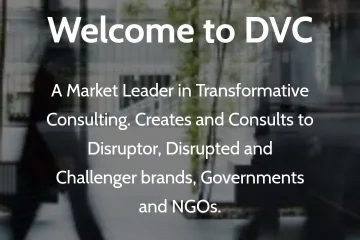The Fourth Industrial Revolution (4IR) is the fourth major industrial era since the initial Industrial Revolution of the 18th century. It is characterized by a fusion of technologies that is blurring the lines between the physical, digital, and biological spheres, collectively referred to as cyber-physical systems. It is marked by emerging technology breakthroughs in a number of fields, including robotics, artificial intelligence, nanotechnology, quantum computing, biotechnology, the Internet of Things, the Industrial Internet of Things (IIoT), fifth-generation wireless technologies (5G), additive manufacturing/3D printing and fully autonomous vehicles.
Klaus Schwab, the executive chairman of the World Economic Forum, has associated it with the “second machine age” in terms of the effects of digitization and artificial intelligence (AI) on the global economy, but added a broader role for advances in biological technologies. These technologies are disrupting almost every industry in every country. And the breadth and depth of these changes herald the transformation of entire systems of production, management, and governance.
Schwab sees as part of this revolution “emerging technology breakthroughs” in fields such as artificial intelligence, robotics, the Internet of Things, autonomous vehicles.
3D printing, quantum computing and nanotechnology. The fourth wave of the industrial revolution is expected to see the heavy implementation of several emerging technologies with a high potential of disruptive effects.
So, what does this mean for the arguably conservative world of Islamic banking?
The impact of disruptive technologies is clearly evident in conventional banking. Financial Institutions have had to fundamentally review their business models or invent new ones. At Banktotal we see these technologies as providing a springboard and opportunity for Islamic banking to grow a new exciting customer base.
There has been a remarkable 11% growth in global Islamic banking assets over the last 5 years, compared with 7% growth for conventional banking assets. This growth is not just limited to the Middle East or Malaysia, but has been increasingly prominent in Africa, Central Asia and also the Far East. Interestingly, Islamic deposits have also seen a 7% growth over the last 5 years, while Sukuks – the Islamic bonds – have been steadily on a growth rate of 5% too.
Most Islamic financial institutions (FIs) are less than 40 years old, and in that time, they have benefited from a large portion of their user base choosing Shari’ah compliant products regardless of the price and benefits. However, the world’s young Muslim population is expected to reach 2.2 billion in 2030, up from 1.7 billion in 2014, according to the State of the Global Islamic Economy Report 2016-17, and standard products and services no longer offer the breadth of functionality demanded by them. With this in mind, the choices made by millennials should dictate product development in order to drive growth and change in the Islamic finance industry.
More and more people are demanding the wide range and functionality of convenience-focused products available in conventional FIs such as intuitive internet banking, mobile banking and multiple credit card products, in addition to Shari’ah compliance. Islamic FIs is now at a very important crossroads and cannot expect to continue its current rate of growth if it falls behind peers in terms of the quality of the digital consumer experiences offered.
The World Islamic Banking Competitiveness Report 2016 by EY, states that Islamic banks have a much lower customer penetration in digital services compared to conventional banks. Whilst these young FIs offer remote banking services, the majority of these remain quite basic, which really opens up the opportunity for innovative, forward-thinking FIs to invest in their digital offerings and gain substantial competitive advantage in the race to attract millennials.
There are three significant issues you can contribute to this growth;
The increasing customer demands that have been witnessed in both commercial and retail banking segments.
The opening up of a regulated Islamic banking market – especially in the Middle East, North Africa and many parts of Asia has allowed for banks to serve an untapped segment.
More importantly, banks have found the benefits of having an Islamic window that compliments the conventional offering, both from a customer segment and a product portfolio standpoint.
Interestingly, the advent of Islamic banking drove innovation through a new set products and services that were Shari’ah compliant. However, as the segment has grown, and continues to grow, the need for differentiation, primarily driven through innovation has become inevitable focused more on differentiated customer segmentation, product bundling and positioning, and driving innovation through technology. Let us explore these three areas of innovation a little further.
Segment based offering
One of the key tenets of any successful Islamic bank is in the successful segmentation of its current and potential customer base.
We are developing a distinctive customer segment –based on the income levels, but also based on the demographics – such as age group, focus groups, communities. Driving innovation in the product positioning and partnerships is a function of having this defined well.
Product bundling
As is evident from the experiences of Islamic banks across multiple countries, the key to driving innovation in products in the next phase of growth is in the efficacy of the bundling strategy. There are essentially 5 types of bundles that banks are looking to drive:
-
Mixed bundling: where the existing individual products get to be offered as a bundle. This is quite typical of any banking offering, where Islamic credit cards, for example, get bundled together with an asset product.
-
Loyalty bundling: this gets more interesting, as Islamic banking products get bundled with Shari’ah compliant loyalty programs. There is a fair degree of financial estimation and innovation in fee structure that may be critical here. Additionally, many of the earn/burn partnerships may have to carefully reviewed, to align with Shari’ah principles.
-
Balance based bundling: driving effective cross-sell, with a singular fee model across products. This is particularly useful in the Islamic banking context, where there are fees designed for most products, and building an integrated balanced based bundling approach can be quite convenient to the customer and also effectively drive cross-selling.
-
Demographic bundling: aligned with the segmentation discussion we had earlier, driving a bundling program around demographics such as gender, age, profession, and location. This can particularly be useful where an existing conventional bank is looking to drive its Islamic window, and prior understanding of the existing customer base can help drive demographic penetrations.
-
Multi-people bundling: Driving a larger bundle for a group – typically a family, to provide efficacy of multiple offerings. Considered an extremely effective product innovation in the Islamic context, this helps in broadening the offering, particularly in the retail context.
The key differentiator here from conventional banking, is the fact that both the bundle, and also the innovation in the structure of the offering, need to be cleared by the Shari’ah board, which regulates the new product offering and validates its compliance to the Islamic banking principles. The method in arriving at the fee structure is derived from the profit pool calculations, and is not as straight forward as in the conventional context. The other important aspect here is the fact that one could potentially align with the value principles promoted by the Islamic context (eg. Product offering for all family members) to drive innovation in bundling of the products and its market positioning.
Just as product bundling is seen as a core innovation area, a natural corollary to this is the set of partnerships that Islamic Banks tend to build that help in driving synergistic value as a branch positioning, and also enhance the overall customer experience. Considering that there are restrictions that are typically applicable in the kind of earn/burn relationships that can partnered with in the Islamic banking context, driving the right partnership and in the process enhancing the stakeholder value has a significant connotation to it. The most common partnerships are typically with utility service providers, travel partners and telecom service providers. We are currently looking at these in Africa and the APR.
Innovations in Technology
The single most important driver for most innovation across banks – both conventional and Islamic alike, cutting across geographies, can be attributed to the adoption of technology. Adapting to new age cool-fintech trends of cloud, digital, big-data and analytics is what we are delivering.
While the innovation and focus in the customer segmentation, product positioning and partnerships can help with the value proposition, the piece that can make a significant impact is the technology-driven innovation.
While there are several aspects to technology innovation, the piece that is of utmost relevance from a conventional-Islamic banking co-existence standpoint is driving the right omni-channel experience for the customer. In simple terms, the customer is keen to experience banking on a consistent basis, quite independent of which channel he or she is engaged with – be it the branch, the ATM, the internet or the mobile channel, and also not requiring to identify oneself separately for being the customer of the conventional and Islamic bank respectively. Taking this one step further, omnichannel experience is also about driving the execution of a transaction across channels.
We are looking to achieve the following: If a customer could request product details on the internet, make the subscription on the mobile, activate the service over a branch, visit and check the balance over the IVR, all in the same breath, then the chances are that the technology integration is well done!
From an internal application architecture standpoint, the conventional and Islamic core banking systems need to co-exist and talk to the aligned applications – be it the credit card management system, retail lending systems, risk management applications, workflow and process management systems, back-office applications for treasury and trade finance, or for that matter integrating with the centralized supports systems including GL.
The Islamic banking industry has fallen behind in modernising its digital payments strategies, relying on branches as the primary point of contact with customers, which could disrupt and stunt this payment sector’s metamorphosis from a niche market to a global powerhouse. By re-evaluating their digital services, Islamic financial institutions can open up new opportunities to increase customer satisfaction, ensure retention and attract new customers, generating new and lucrative revenue streams. Banktotal is at the forefront of doing this.
The World Bank has set 2020, as a target year to achieve Universal Financial Access (UFA). This initiative calls for adults everywhere to have access to a transaction account to store money, send and receive payments. Banktotal have a well formulated strategy to play a part in helping them deliver on this.
Employing blockchain and cloud-based solutions, the venture leverages technology and software to digitize and streamline retail banking for emerging economies. Focusing primarily on Africa and Asia, Banktotal will also make available shariah-compliant products, to this market.

About the authors
Quentin Anderson is Co-Founder and CEO of Banktotal
Minkailou Semega Janneh is an expert in Islamic banking and ex-board member of GT Bank and sits on the advisory board of Banktotal.
DVC Consultants is a market leader in transformative consulting. It creates and consults to disruptor, disrupted and challenger brands. It is clear that brands and their owning companies have no room for complacency, and need constantly to evolve, or risk becoming extinct. DVC Consultants has therefore developed LOAF (Leadership and Organisation in Anarchic Flux) as a proprietary consulting process for supporting our clients in being disruptors and challengers, rather than being on the receiving end of companies more innovative. Challenger and Disruptor brands succeed because they emerge from developments not properly observed by market incumbents. LOAF works because it builds on DVC’s expertise and experience in an eclectic and wide range of sectors and disciplines, including branding, economics, politics, government affairs consultancy and new technologies.



0 Comments